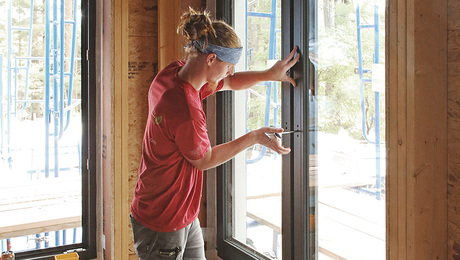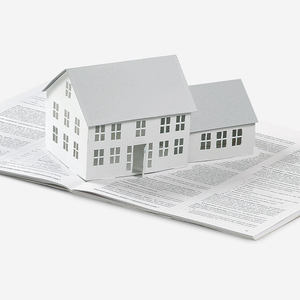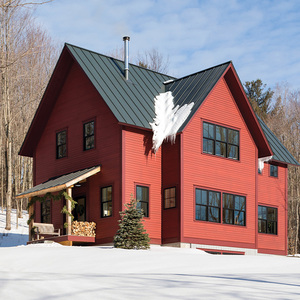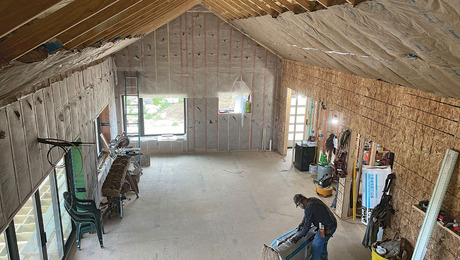Tiny House Kits: An Online Buying Trend
Three tiny house advocates weigh in on Amazon’s latest home product.
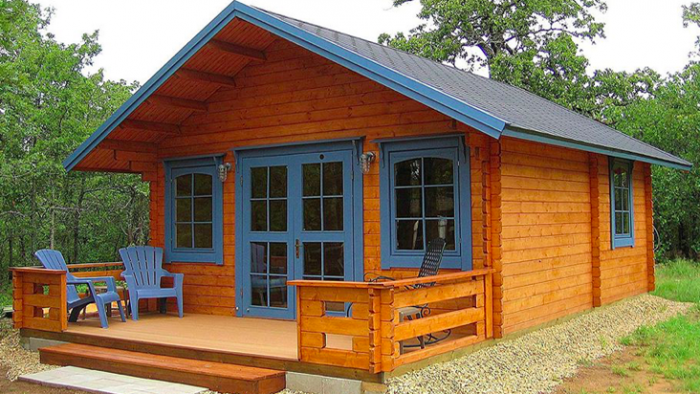
Though marketed as tiny homes, the modular kits available on Amazon are more aptly described as accessory units. The “cabins” are essentially empty shells, not truly livable spaces. There’s no foundation, no kitchen, no bathroom, no insulation, no interior finishing, and no roof shingles. Plus, they are not designed for electrical and plumbing hookups. What they do include is floor and partial roof materials, prehung and glazed doors and windows, preassembled gables, fasteners, handles, door locks, and assembly instructions. And yes, shipping is free.
No doubt it’s the kits’ price tags, which range from $5000 to $34,000, that are grabbing people’s attention—and purse strings. However, for the products to function as homes, buyers will need to go far beyond assembly, bearing in mind that adding a foundation and electrical and plumbing systems typically involves building and zoning codes, taxes, and permits.
After reading a few business-journal articles and a handful of consumer reviews, I formed an opinion of these kits, but I wanted to hear from people knowledgeable about tiny houses. Enter Alek Lisefski, Dan Louche, and Maria Saxton.
Founder of The Tiny Project, Alek Lisefski is deeply involved in the tiny house movement. He points to some considerations for a potential kit buyer: “What is the main purpose of this kit/house? Will I be living in it full time or will it be a weekend hut? What do I need to be comfortable (power, water, appliances, etc.)? How will waste and/or gray water be dealt with? What kind of electrical system will I need (20 amp, 30 amp, or 50 amp)? Do I want it to be off-grid? Where will it be located and are there code/zoning restrictions that prevent legal habitation? Those are just a few of hundreds. It’s not a decision to be made quickly without adequate planning.”
Alek offers other precautions as well, noting that it’s not easy to get everything right when packing standard house components into a tightly restricted space. For a comfortable and safe tiny house, he recommends saving the money you would spend on a kit and putting it toward “a well-built house, rather than a short-sighted solution.” For people uninterested in doing much of the building themselves, he suggests buying a completed tiny house shell, which he notes will be watertight. Though this option comes with a warning, too: “Even this leaves a lot of work to do—kitchen, bathroom, power, water, WiFi, etc. And with a completed shell you can’t change the design.”
Recognizing the kits’ appeal, Alek points to what he sees as better alternatives to Amazon’s offerings: a custom-manufactured SIP (structural insulated panels) system or a metal framing system specified for a custom tiny house design—often with the trailer included as a package.
Asked how realistic the claims are that these kits can be built in a day by two people with no prior building knowledge, Alek responds: “If the kit is for a simple shed, then the basic structure could be put up that quickly, but that can’t possibly include the more time-consuming things like plumbing, electrical, and all interior finishing. By contrast, most DIY tiny house builders spend months or sometimes years building their house. It always takes at least twice as long as you think it will, especially if you have little building experience and will be making mistakes and solving problems along the way.”
Tiny Home Builders owner Dan Louche notes that the materials cost for a kit home is considerably less than an ADU (auxiliary dwelling unit) or a tiny house of a similar size because of the way it’s constructed. “While a tiny house’s walls are made to hold electrical and insulation suitable for long-term living, most kit homes are not. The walls are simply dimensional lumber that has been notched to link together.” This design is meant to be easy to assemble but Dan notes it also results in a distinct look—that of a children’s play house.
Regarding the alluring price tags, Dan sees them as a wash. “I expect the savings in time and money of buying a kit is lost when the walls need to be built out to accommodate insulation, plumbing, and electrical, not to mention changes that will need to be made to make the house more structurally sound.” He also sees site prep as a significant sticking point: “This step alone could add considerably to the cost. The structure needs to be level and the wood can’t come into direct contact with the ground if you want it to last.”
In addition to the perceived cost savings, Dan attributes the online buying trend to a general interest in tiny house living. “Companies get a lot more attention using the term ‘tiny house.’ You even see this at campgrounds, where instead of cabins, they are now offering tiny homes to rent. When it comes to these kits, I think the term shed is more appropriate.”
Here, Alek offers a final thought: “I’d say 99/100 times you’re better off seeking help from an experienced tiny house company or, at the very least, from a local architect/craftsman/builder. Poorly designed and poorly constructed houses (and the accidents that may cause) are one of the things that could, in the long wrong, hurt the DIY tiny house movement and the advancement of legal/zoning issues. I’d be careful of anything that is not specifically designed for tiny house use.”
Maria Saxton, co-founder of Floyd Tiny House Innovators, has another point of view. “I support the kit industry with the assumption that the kits are shells to be built upon.” She sees their greatest potential in disaster relief aid, as they are ideal for shipping in large quantities and can be erected in a matter of days. She also believes they could play a role in the affordable housing crisis solution, and she makes the point that they are ideal for DIYers who don’t have advanced building skills but are willing to do a bit of work.
Maria speaks of the kit concept as having real value in the professional tiny home industry, while recognizing the big-box, Amazon-sourced kits are less reputable—there being a distinct difference in the quality and sustainability of the building materials. “The kits offered by industry experts are structurally sound and insulated,” she notes, pointing to one such company, Tiny House Kits in Floyd, Virginia, which offers the SIP kits that Alek recommends. As for the Amazon kits, she says the onus is on consumers to research what they are buying. “There are a lot of associated costs that they need to know about before diving in. They need to understand they are just getting a frame.”
I would argue that the online availability of Amazon’s tiny “house” kits is valuable for the way in which it highlights the structures’ feasibility, thereby generating increased interest in downsizing in general. But the bottom line is: If you are truly invested in tiny home living, you’ll want more than what Amazon is selling—whether that means building new or retrofitting a shell.
If you have thoughts on tiny house kits, please send them to [email protected].
Images from Amazon.com
For more on tiny houses:
Fine Homebuilding Recommended Products
Fine Homebuilding receives a commission for items purchased through links on this site, including Amazon Associates and other affiliate advertising programs.

Homebody: A Guide to Creating Spaces You Never Want to Leave

All New Bathroom Ideas that Work
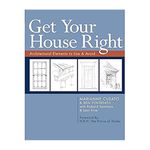
Get Your House Right: Architectural Elements to Use & Avoid









